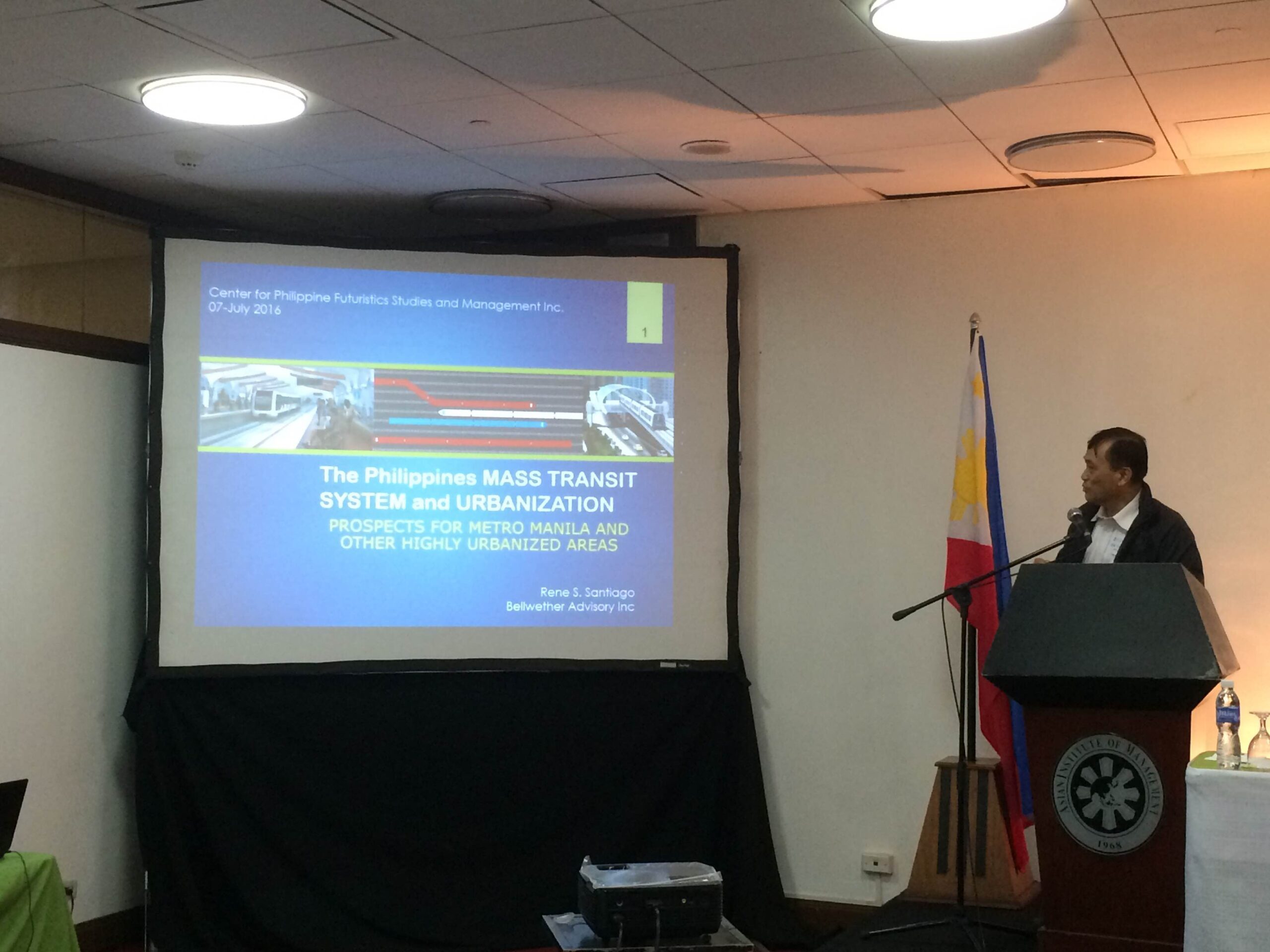SUMMARY
This is AI generated summarization, which may have errors. For context, always refer to the full article.

MANILA, Philippines – The traffic congestion in Manila has reached crisis proportions, but using executive powers to push a railway project will not quickly solve it, a group of transport experts warned on Thursday, July 7.
“The traffic congestion in Manila has gotten almost to the point of no return where any solution will be hopeless and very expensive to recover,” Rene Santiago, president of Bellwhether Advisory Incorporated, said during a discussion on mass transit held by the Asian Institute of Management.
At the moment, the most significant factor that contributes to congestion is the use of private cars and urban density in the capital – set to become the most dense in the region.
In 1980, Metro Manila had 98 persons per hectare. By Santiago’s calculation, this will rise to 224 people per hectare by 2030. That will put the capital’s density higher than even Tokyo.
This translates to traffic congestion not just during peak hours but the entire day. Santiago said that at present, “30% of private vehicles users occupy 70% of the road space, which leaves 30% for public transport that most of the population uses.”
The congestion problem has risen to national consciousness and the new president, Rodrigo Duterte, is certainly aware of its magnitude. He suggested giving the transportation department “extraordinary powers” which may include not limiting the number of bidders for a project to expedite the process.
Wrong obsession
Santiago, who was involved in the country’s first Light Railway project, said that he advised the Aquino administration a year ago to declare the traffic situation in Manila a crisis, but stopped short of recommending emergency powers as many of the solutions don’t actually need them.
“The Duterte administration is very serious about fixing the issue, but I don’t think they have formulated a complete plan for transport yet. It seems that they are obsessed with railways but I think it’s the wrong obsession,” he said.
“Rail is important but should not be the priority because it takes time to do. There are simple things you can do now that will immediately help Manila’s congestion such as well-targeted policies,” Santiago added.
These include controlling stop lights to allow them to adjust to traffic in real time and designing incentives to get motorists to carpool. Carpooling can eventually be passed into law, with carpool lanes like those in Singapore and California being provided for.
“If you get even just two people to agree to carpool, you lose one car on the road and if everyone conforms, it’s a dramatic shift,” he added.
“Rail will help when they finish 5 to 10 years from now. If they start any new rail line, I guarantee it would take a minimum of 5 years to complete, not the two, that the administration suggests,” Santiago said.
He added that this is when projects such as the North-South Railway will be crucial. The current plan seems to be ambitious, according to him, but implementation could be faster if done in stages.
Develop Cebu, Davao
Santiago, a principal architect of the Mega Manila Dream plan, said that regional integration is the medium-term solution.
We need development outside the 17 cities of Metro Manila, especially in Bulacan, Rizal, Laguna, and Cavite. This is because most of the demand is coming from the north and the south – from people trying to come into Metro Manila, he explained.
The idea is for people who live outside to be able to travel to their place of work in one hour, instead of the current 3. If that happens, the poor can live outside of, but still work in Manila.
Santiago also pointed out that the long-term sustainable solution to decongesting Metro Manila, lies in the rapid emergence of Cebu and Davao. Cebu and Davao need to grow faster than the metro for this to happen, and the quickest way to do that is by giving each an efficient rail system, Santiago added.
Both cities are still relatively safe in terms of congestion relative to Manila, Santiago pointed out, but “they are at a critical point in their development wherein they could head in a car-dominated direction like Manila, or move towards a more mass public transport system.”
Cebu, at the moment, is focused on a Bus Rapid Transit System (BRT), which Santiago had previously described as an “P11-billion fiasco in the making”.
One major reason for this is that Cebu doesn’t have wide roads, which the buses would have to traverse. This would result in less space for cars, as well as the removal of around 2,000 jeepneys plying the road.
“A few years back, Ayala Corporation offered to create a BRT system along Ayala Avenue at no cost to the government but was prevented from doing so because it required the removal of 120. If they couldn’t get 120 jeepneys out, how do we remove 2,000?” he pointed out.
Santiago added that putting in rail will not result in the removal of jeeps and buses. “Buses and jeepneys will still be a part of the scenery for a long time but not in the form it is in today. We have to modernize them.”
Instead of a BRT, he espouses putting in a railway system, especially since Cebu and Davao are both coastal cities with mountains in the inner areas. This makes rail a logical choice, considering too that both cities are big enough to justify use of such a system.
This won’t be an easy fix though, Santiago warned, as years of mismanagement have taken their toll.
“Continuous implementation of the Mega Manila dream plan is key. We have delayed for so long we have to pay the price. There are no silver bullets,” he said. – Rappler.com
Add a comment
How does this make you feel?
There are no comments yet. Add your comment to start the conversation.